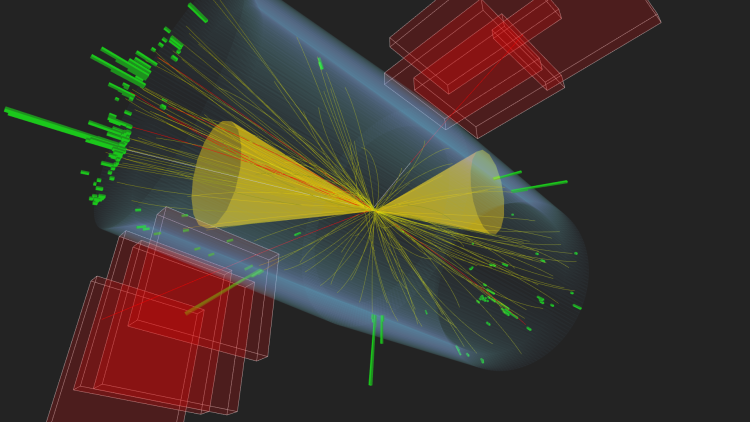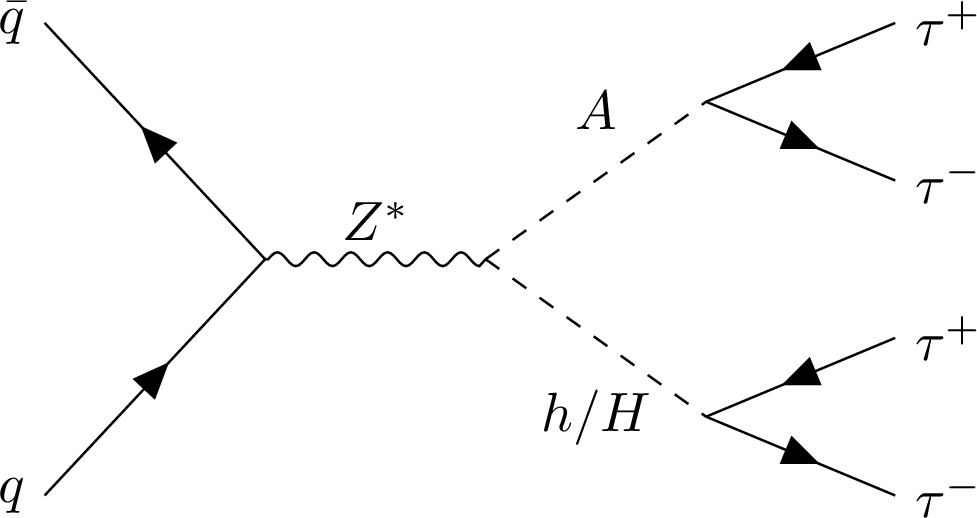
The recent results from the Muon g-2 Collaboration have added to the growing tension between the measured and predicted values of the muon’s magnetic moment. The equivalent measurement of this property for the electron is a cornerstone of quantum electrodynamics (QED), as it agrees to incredible precision with the QED prediction, which differs from the value predicted by the Dirac equation. The discrepancy in the case of the muon could hint at the presence of physics beyond the standard model. One theory that offers ways to explain the tension is the so-called Type-X 2-Higgs-Doublet Model. Similarly to other 2HDMs, it predicts the existence of 5 Higgs bosons, but the additional Higgs bosons have enhanced couplings to leptons and suppressed couplings to quarks. The enhanced couplings to muons allow for the additional Higgs bosons to contribute significantly to the muon’s magnetic moment, explaining the observed deviation. Until this new result by the CMS Collaboration, the Type-X 2HDM model was largely unexplored.
To probe the parameter space of the Type-X 2HDM model that could explain the muon’s magnetic moment anomaly, our analysis looks for the production of two different heavy neutral Higgs bosons from an off-shell Z boson (see Fig. 1). The off-shell Z boson does not come to realization as a real particle. Rather, its role is to propagate the very high energy of the incoming quarks to heavy neutral bosons. Given that this model favors decays to leptons, and that Higgs bosons decay preferably to heavier particles, the most likely decay is to a pair of tau leptons, the heaviest leptons of the standard model. This leads to 4 tau leptons in the final state.

Figure 1: A Feynman diagram illustrating the production of two heavy neutral Higgs bosons from an off-shell Z boson and their subsequent decay to tau leptons.
Experimental analyses with tau leptons are notoriously difficult for a variety of reasons and this analysis is particularly challenging, given the four taus in the final state. Tau leptons decay in three generic ways: an electron plus neutrinos (⅙ of the cases), a muon plus neutrinos (another ⅙ fraction), or a combination of charged hadrons, neutral hadrons, and a neutrino (the remaining fraction). This analysis targets six possible combinations of tau decays, covering 87% of all 4-tau decay possibilities. The neutrinos from the tau decays cannot be detected and the energy imbalance resulting from all the tau decays is measured together. In addition, there is a combinatorial problem in assigning reconstructed tau leptons to their parent Higgs bosons. Therefore, the Higgs bosons may not be correctly reconstructed and their masses may not be precisely determined.
Our analysis mitigates this problem by computing another variable: the total transverse mass, mTtot, which is higher for the searched signal than for standard model processes. Finally, abundant background events with quark- or gluon-jets can be misidentified as hadronically decaying tau leptons. This analysis developed an advanced machine learning method to predict background events with misidentified taus, providing a precise evaluation of this contribution.
Figure 2 shows the mTtot distribution for the backgrounds and the expected signal. The data points follow the background prediction: there is no sign of events that could be a signature of the Type-X 2HDM model. Therefore, this analysis excludes the Type-X 2HDM model as a possible explanation for the tension between the measured and predicted muon’s magnetic moments. The cause of that anomaly must originate from a different source, still unknown.

Figure 2: Distribution of the total transverse mass in data and for the predicted standard model backgrounds, dominated by jets misidentified as hadronically decaying tau decays (light green). A signal hypothesis with H and A masses of 200 and 160 GeV, respectively, is shown by the blue solid line. The lower panel shows the ratio between the data (black dots) and the predicted background, as well as the hypothetical signal. The plot shows 7 final state categories, representing different decay combinations of the 4 tau leptons.
Read more about these results:
-
CMS Physics Analysis Summary (SUS-23-007): " Search for an explanation to the muon anomalous magnetic moment through the non-resonant production of two additional Higgs bosons "
-
@CMSExperiment on social media: LinkedIn - facebook - twitter - instagram
- Do you like these briefings and want to get an email notification when there is a new one? Subscribe here

